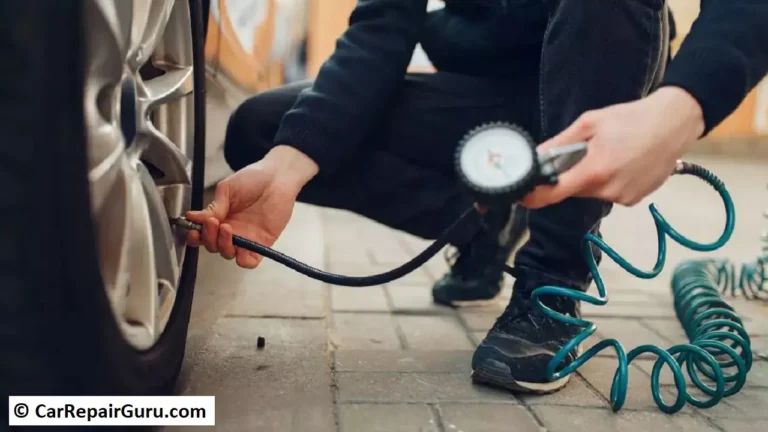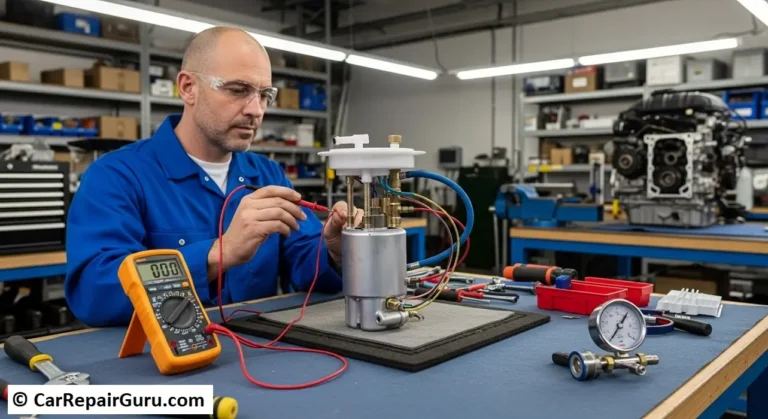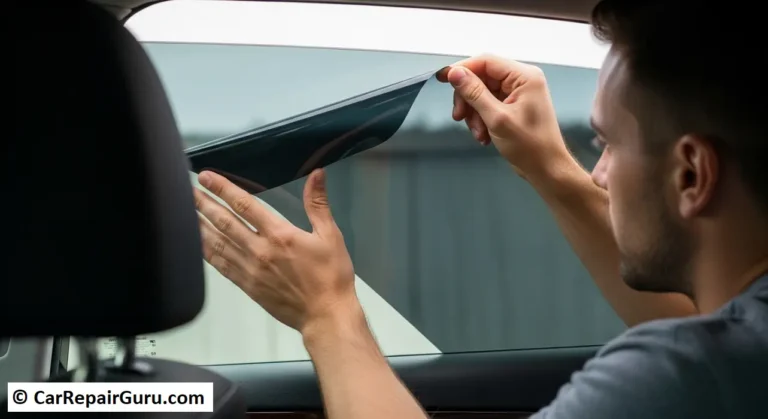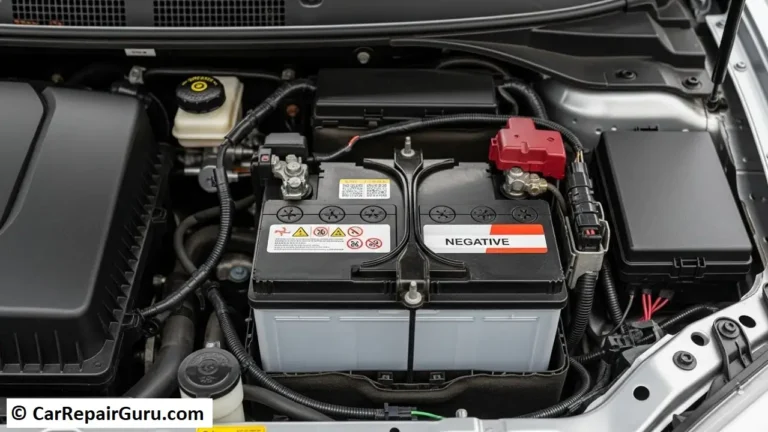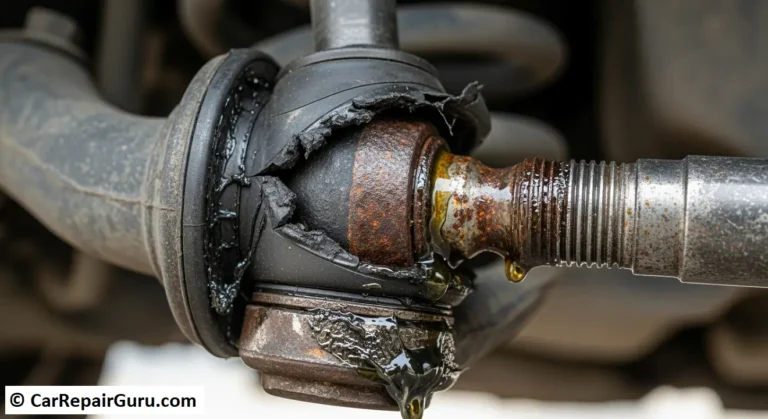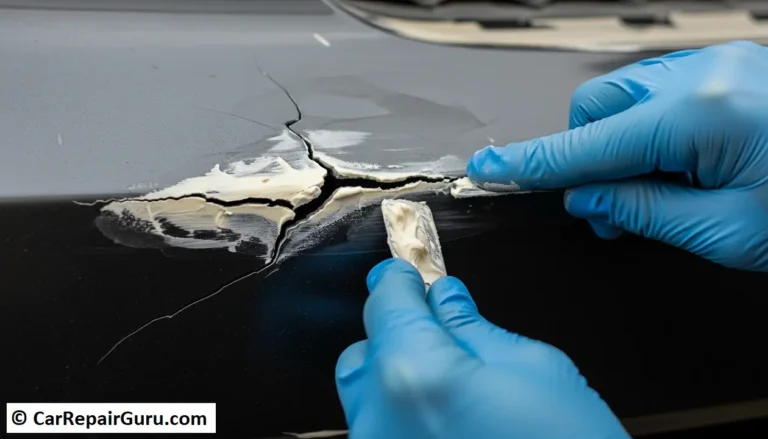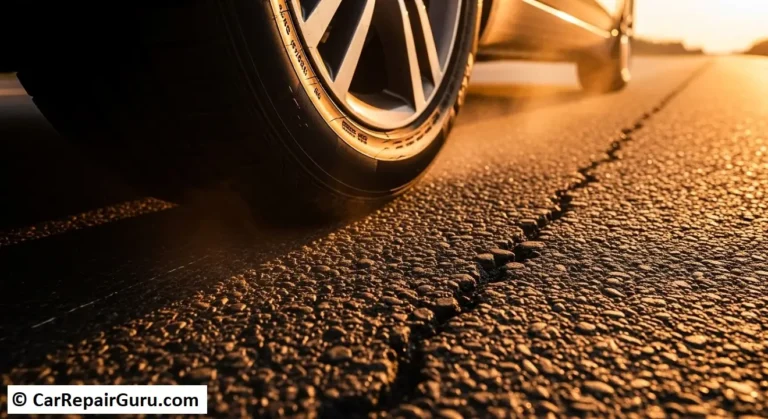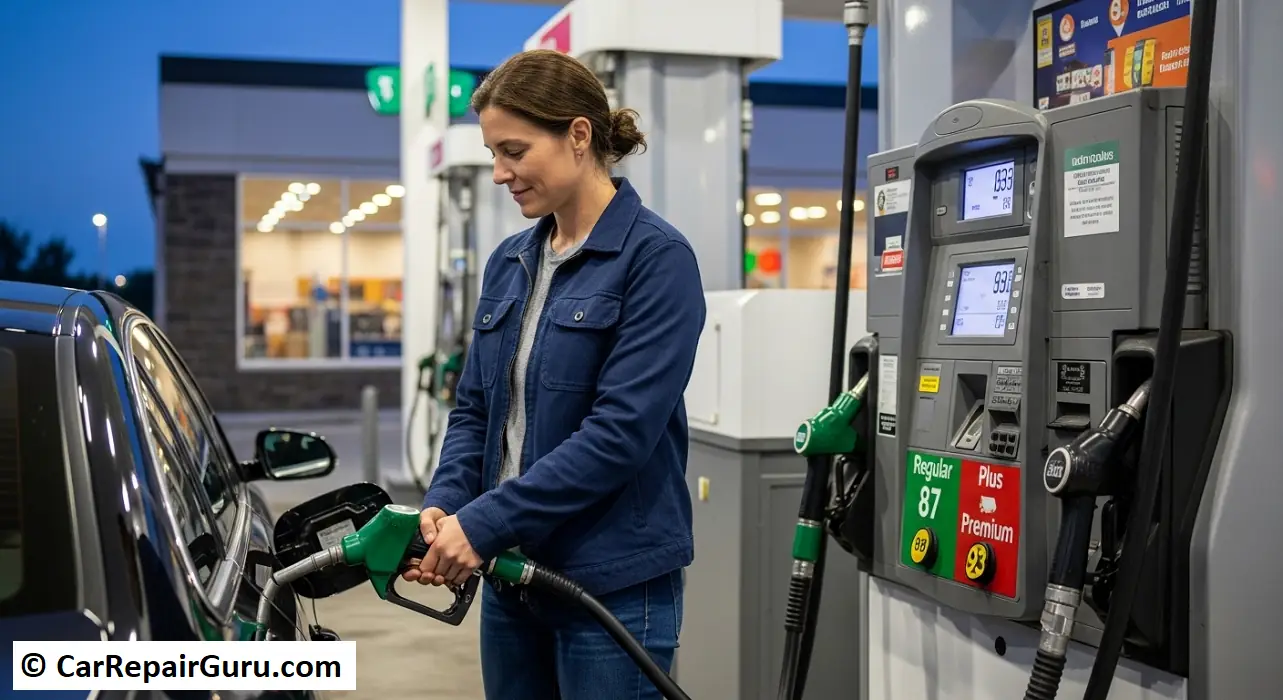
You pull up to the pump, ready to fill up, and then you see it: a confusing array of buttons with different numbers—87, 89, 91, sometimes even 93. You might ask yourself, “What gas should I use? Does it even matter?”
The answer is a resounding yes. Choosing the right gasoline for your car isn’t just about price; it’s one of the most important and easiest things you can do for your vehicle’s health. Using the correct fuel directly impacts your engine’s performance, its long-term reliability, and your overall fuel economy. Putting the wrong type in can, at best, waste your money and, at worst, lead to expensive engine damage.
Don’t worry. This guide will simply and clearly explain everything you need to know about octane ratings, the difference between regular and premium, and exactly how to find the right fuel for your specific car. By the end, you’ll feel like an expert every time you grab the pump nozzle.
What Do Octane Ratings (87, 89, 91) Actually Mean?
Let’s start by demystifying those numbers. The most prominent number you see on a gasoline pump is the octane rating. It’s a standard measure of a fuel’s stability.
What is Octane?
In simple terms, an octane rating measures a fuel’s ability to resist “knocking” or “pinging” during combustion. Inside your engine, a mixture of air and fuel is compressed by a piston and then ignited by a spark plug to create the power that moves your car.
Engine knock, also known as pre-ignition, is what happens when pockets of that air-fuel mixture ignite on their own due to compression, before the spark plug does its job. This creates tiny, uncontrolled explosions that sound like a metallic pinging or knocking noise. Over time, this can seriously damage your engine’s pistons and cylinder walls.
Here’s the most important takeaway: A higher octane rating does not mean the fuel has more power, is cleaner, or is more “potent.” It simply means the fuel is more stable and can withstand higher compression before igniting. This stability is only necessary for a specific type of engine.
The Different Grades Explained
- Regular (87 Octane): This is the standard gasoline used by the vast majority of cars on the road. It has the lowest octane rating and is designed for engines with a standard compression ratio.
- Mid-Grade (89 Octane): Typically a blend of regular and premium gasoline. Very few cars actually require this specific grade; it’s mostly a marketing middle ground.
- Premium (91-94 Octane): This fuel is more resistant to engine knock. It is required for engines with high compression ratios, turbochargers, or superchargers. These high-performance engines squeeze the air-fuel mixture more tightly, creating more heat and pressure, which necessitates a more stable fuel.
| Fuel Type | Common Octane Rating | Best For |
|---|---|---|
| Regular | 87 | Most standard cars, as recommended by the manufacturer. |
| Mid-Grade | 89 | A small number of cars that specifically require it. |
| Premium | 91, 93+ | High-performance, turbocharged, or luxury cars that explicitly require it. |
The 3 Easiest Ways to Find What Gas Your Car Takes
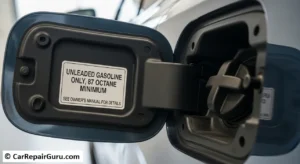
So, how do you find out the correct octane for your specific vehicle? It’s easier than you think. The definitive answer is always provided by the people who built your car.
1. Check Your Owner’s Manual
This is the most reliable source of information. Grab that little book from your glove compartment and look in the index for “Fuel,” “Gasoline,” or “Recommended Fuel.” The manual will state the minimum required octane rating in no uncertain terms. It will also specify if your car is a “Flex Fuel” vehicle that can take E85 ethanol.
2. Look Inside the Fuel Door
Most modern cars make it incredibly simple. Just open the little door that covers your gas cap. You will likely see a sticker or embossed text that says something like “Unleaded Gasoline Only, 87 Octane” or “Premium Unleaded Fuel Only.” This is the manufacturer’s direct instruction right where you need it most.
3. Do a Quick Online Search
If you can’t find your manual, a quick search can help. Use a reputable source and be specific. For example, search for “2022 Toyota Camry recommended fuel type” or “what gas does my car take Ford F-150.” The manufacturer’s official website or trusted automotive sites like Edmunds or Kelley Blue Book are your best bets.
Does Premium Gas Make My “Regular” Car Better?
This is one of the most common and expensive myths in the automotive world. You might hear people claim that treating their car to premium fuel once in a while “cleans the engine” or gives it a performance boost.
The Fact: If your car is designed to run on 87 octane, putting 91 or 93 octane fuel in the tank provides absolutely no benefit. Your car’s engine control unit (ECU) is calibrated for regular gasoline. It isn’t designed to take advantage of the higher stability of premium fuel, so you won’t see an increase in horsepower, torque, or fuel mileage.
The only thing that will increase is the amount you spend at the pump. Don’t fall for the marketing. Only use premium gas if your car’s manufacturer explicitly requires or recommends it.
What Happens if I Use the Wrong Gasoline?
Accidents happen. So what are the real-world consequences of a mix-up at the pump? It depends on the mistake.
Using Regular Gas in a Car That Requires Premium
This is the mistake you want to avoid.
- Short-Term: Modern engines are smart. Their sensors will detect the potential for engine knock from the less-stable fuel and automatically adjust the ignition timing to protect the engine. This adjustment, however, results in a noticeable reduction in horsepower and fuel economy. Your check engine light may also illuminate.
- Long-Term: Continuously using a lower-octane fuel than required can lead to persistent engine knock, which can cause significant and costly damage to pistons, valves, and other internal engine components over time. It can also void your vehicle’s warranty.
Using Premium Gas in a Car That Requires Regular
As we covered above, the only negative consequence here is to your bank account. It will not harm your engine in any way, but it won’t help it, either. The extra money you spend is effectively wasted.
What If I Accidentally Put Diesel in My Gas Car (or Vice Versa)?
This is a critical, engine-destroying mistake. Diesel fuel is an oil, not a solvent like gasoline. It requires compression to ignite, not a spark.
- CRITICAL WARNING: DO NOT START THE ENGINE. DO NOT EVEN TURN THE KEY TO THE “ON” POSITION.
- Starting the engine will circulate the diesel through your entire fuel system—the pump, lines, filters, and injectors. This can ruin every single one of those components, leading to thousands of dollars in repairs.
- What to Do: If you realize the mistake at the pump, leave the car where it is. If you’ve driven off, pull over immediately to a safe location and shut it off. You must call a tow truck to take your vehicle to a mechanic to have the fuel tank professionally drained and flushed.
Beyond Octane – What About “Top Tier” Gas and Ethanol?
Octane isn’t the only thing that differentiates fuels. You might also see stickers for “Top Tier” or different ethanol blends.
Is “Top Tier” Gasoline Worth It?
Yes. “Top Tier” is not a marketing gimmick; it’s a real fuel standard developed by a consortium of major automakers (like GM, Honda, Toyota, BMW, and others). Top Tier certified gasoline contains a higher concentration of high-quality detergent additives designed to prevent and clean up carbon deposits on critical engine parts like intake valves and fuel injectors.
Using Top Tier gasoline is one of the best things you can do for the long-term health of your engine, regardless of the octane rating you use. Most major brands are Top Tier certified—you can easily find a list on the official Top Tier website.
Understanding Ethanol (E10, E15, E85)
- E10: Nearly all gasoline sold in the U.S. contains up to 10% ethanol. It is perfectly safe for every modern vehicle.
- E15: A newer blend with up to 15% ethanol. It is approved by the EPA for use in most cars from the 2001 model year and newer. However, it can damage older vehicles and outdoor power equipment. Always check your owner’s manual before using E15.
- E85 (Flex Fuel): This is a high-ethanol blend (51% to 85% ethanol) designed only for Flex Fuel Vehicles (FFVs). These vehicles are specially built to handle the corrosive properties of high-ethanol fuel. Using E85 in a standard gasoline car will cause severe damage to the fuel system and engine.
Beyond the Pump – 5 Bonus Tips for Better Fuel Efficiency
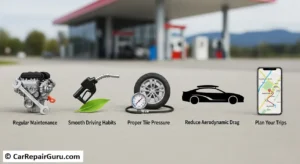
Choosing the right fuel is the first step. To get the most out of every gallon, regardless of octane, follow these proven tips.
1. Maintain Proper Tire Pressure
Underinflated tires create more rolling resistance, forcing your engine to work harder to move the car. Check your tire pressure at least once a month. The correct PSI is listed on a sticker inside your driver’s side doorjamb, not on the tire itself.
2. Drive Smoothly
Aggressive driving—rapid acceleration, hard braking, and speeding—is a major fuel waster. Anticipate traffic flow, accelerate gently, and coast to a stop when possible. Using cruise control on the highway can also help maintain a steady, fuel-efficient speed.
3. Reduce Weight and Drag
The heavier your car is, the more fuel it needs to move. Remove any unnecessary heavy items from your trunk or cabin. Additionally, external carriers like roof racks and cargo boxes significantly increase aerodynamic drag, hurting fuel economy, especially at highway speeds. Remove them when not in use.
4. Avoid Excessive Idling
An idling car gets 0 miles per gallon. If you’re going to be parked for more than 60 seconds, it’s more fuel-efficient to turn off your engine and restart it when you’re ready to move.
5. Keep Up with Basic Maintenance
A well-maintained engine is an efficient engine. Regular maintenance like changing your oil with the manufacturer-recommended grade, replacing a clogged air filter, and ensuring your engine is in a good state of tune will help it operate at peak efficiency.
The Golden Rule of Fueling Your Car
When it comes to your car’s fuel, there is one simple golden rule: Always follow the manufacturer’s recommendation.
Engineers spend thousands of hours designing and testing your vehicle’s engine to run optimally on a specific type of fuel. Trust their expertise.
To recap:
- Always use the octane level specified in your owner’s manual or on the inside of your fuel door.
- Don’t waste your money on premium fuel if your car only requires regular.
- Using Top Tier branded gasoline is a smart, easy way to maintain your engine’s long-term health.
Choosing the right gasoline is simple once you know where to look. It’s a small step that protects your investment and ensures your car runs smoothly and efficiently for years to come.
Frequently Asked Questions (FAQ)
Here are direct answers to some of the most common questions about gasoline.
Can I mix premium and regular gas?
Yes. Mixing different octane grades is perfectly safe. The resulting mixture will have an octane level somewhere in between. This is a good strategy if you accidentally put regular gas in a car that requires premium—topping off the tank with premium fuel will raise the overall octane.
What happens if I put the wrong octane in my car for one tank?
It depends, but one tank is usually not a disaster. If you put premium in a regular car, nothing will happen except to your wallet. If you put one tank of regular in a premium-required car, your engine’s computer will likely adjust to prevent damage, but you’ll experience reduced power and fuel economy. Avoid hard acceleration and fill up with the correct fuel as soon as possible.
Does premium gas give you better mileage?
No, not if your car only requires regular fuel. Your car will achieve its best mileage on the octane grade the manufacturer designed it for. Using a higher-octane fuel than necessary provides no benefit, while using a lower-octane fuel than required will decrease your mileage.
Is Top Tier gas worth the money?
Yes, for most drivers, it is a worthwhile investment in engine health. Top Tier gasoline contains a higher level of detergents that prevent and clean carbon deposits on vital engine parts. While it might cost a few cents more per gallon, it can help maintain performance and prevent costly repairs down the road.
How do I know if my car can use E85 Flex Fuel?
Only use E85 if your vehicle is specifically designated as a Flex Fuel Vehicle (FFV). Check for a yellow gas cap, a badge on the rear of your car that says “Flex Fuel,” “FFV,” or “E85,” or consult your owner’s manual. Using E85 in a non-FFV car will cause serious damage.
